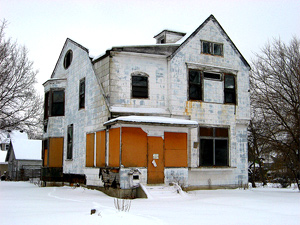In response to the stock market crash of 1929, the Banking Act of 1933, also known as the Glass-Steagall Act, put up a wall between commercial banking and investment firms. That wall stood for more than 60 years until it was torn down by the 1999 Gramm-Leach-Bilely Act, which allowed commercial banks to reap huge profits, but also resulted in financial institutions that were so large that, had they failed, they would bring down the entire economy with them. So when those banks began to crumble following the collapse of the housing bubble, we taxpayers were left with little option but to bail them out while our federally insured deposits were put at risk. Thus, Senator Elizabeth Warren from Massachusetts has introduced legislation that would reenact the regulations that were stripped away 14 years ago. [More]
glass-steagall act

Sen. Elizabeth Warren Introduces ’21st Century Glass-Steagall Act’ To Rein In Too-Big-To-Fail Banks

Blame The Subprime Meltdown On The Repeal Of Glass-Steagall
A lot of blame has sloshed around for the sub-prime meltdown, from greedy borrowers to greedy mortgage brokers to Alan Greenspan, but if you want the real culprit, it was the repeal of the Glass-Stegall Act. On November 12, 1999, the champagne must have been shooting from the walls at Citigroup, which had worked behind the scenes for over 30 years to get the act overturned. After recovering from their hangover, they and their banking buddies went on a sub-prime lending orgy. But what was Glass-Steagall and how did it use to protect us?

